-
Our tackle boxes
Contains
- Small and large plasma tubes
- Extra 2ml eppendorf tubes
- Extra Lithium heparin (anticoagulant) tubes
- A handful of syringes
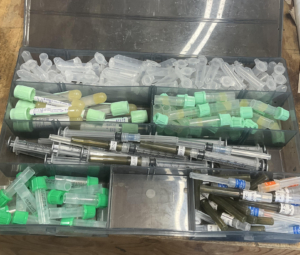
-
A scale
Each of us has a scale type:
- 1 large hanging scale used to weigh our big turtles (>5kg) (softshells & snappers)
- 1 small tabletop scale
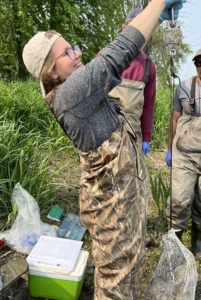
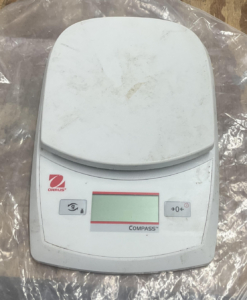
-
Extra syringes already prepped with needles in multiple sizes for both big and small turtles!
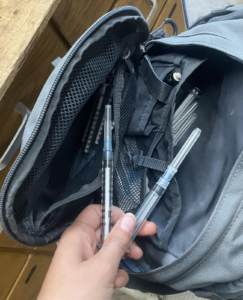
-
A pencil box filled with sanitized probes (used for getting stubborn turtle mouths open)
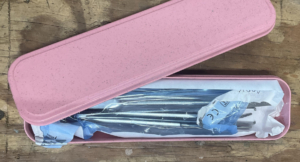
-
A spray bottle with bleach!
- One of our student researchers in the lab discovered that bleach is especially effective in sanitizing equipment between turtles to keep from spreading any pathogens!
-
A pack of both small and large swabs (basically just giant q tips)
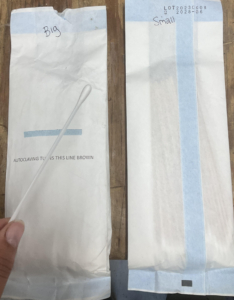
-
Isopropyl alcohol in tubes & a pair of hemostats
- For 1 of Kate’s projects involving leeches! This allows us to collect and store leeches for later use!
-
A trash bag
-
Hand sanitizer and Gloves!
- Biosecurity is especially important when we’re handling so many turtles in a day!
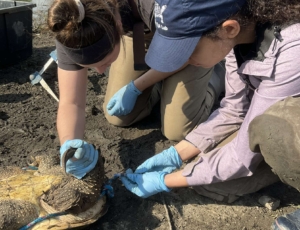
-
A sharps box
- Proper disposal of our needles is incredibly important for everyone’s safety
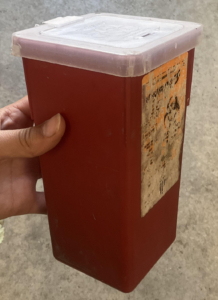
-
Calipers
- This typically does not fit in our backpacks and instead is traditionally sheathed somewhere in our boats or behind our backs but its crucial to getting turtle measurements.
-
Tiny sharpies!
- Tiny tubes mean tiny sharpies for labeling things
-
Snapper ropes!
- Bottom line = Common snapping turtles are dangerous animals with bites definitely capable of producing injury! These ropes allow us to maneuver them in a safe manner during our health assessments.
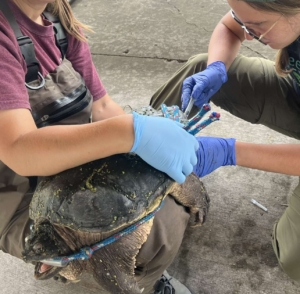
-
A drill
- Cook county utilizes a drill to produce notches in our turtle shell. Other counties will often utilize a hand file for this.
-
Ipads
- This is where we take notes on all exams done during the day!
